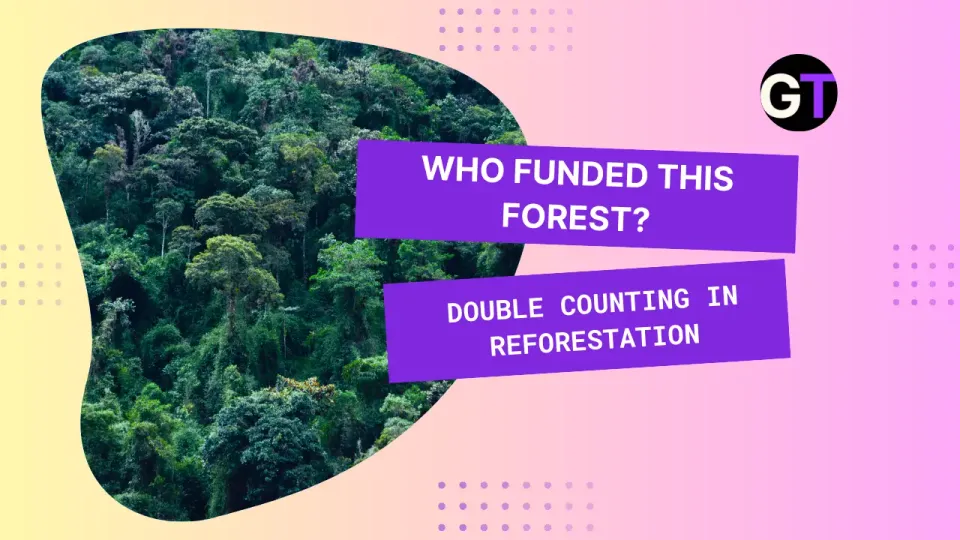UNEP State of Finance for Nature 2023 🇺🇳
The UNEP's 2023 report urges tripling funding for nature-based solutions to meet sustainable finance targets under the Rio Conventions.

Rio Convention Targets: Aligning Finance for Sustainable Development Goals 🌱💸
The United Nations Environment Programme (UNEP), alongside Global Canopy and the Economics of Land Degradation Initiative, just released its 2023 State of Finance for Nature (SFN) report—and the numbers are eye-opening. Nearly $7 trillion a year flows into activities that harm nature (like fossil fuel subsidies and unsustainable agriculture), while nature-based solutions (NbS) get just $200 billion.
To meet global targets like the Rio Conventions and Sustainable Development Goals (SDGs), we’ll need to nearly triple NbS funding to $542 billion annually by 2030. It’s a challenge, sure, but also a massive opportunity to rethink how we fund the planet’s future.

The Glaring Nature-Negative Imbalance 🏭 vs. 🌿
Here’s the deal: In 2022, subsidies for activities that harm ecosystems hit a staggering $1.7 trillion, a 55% jump from the year before. Most of this money fuels industries like energy and agriculture.
Meanwhile, private sector contributions to NbS totaled a modest $35 billion compared to the $5 trillion invested in nature-negative industries. The imbalance is striking—but in our view, it’s not a reason to despair. Instead, it shows just how much room we have to shift gears toward planet-positive financing.

Scaling Up Nature-Based Solutions: The Power Move 🌳✨
Nature-based solutions are like the Swiss Army knife of investments: they’re versatile, impactful, and highly cost-effective. Whether it’s biodiversity credits, ecosystem restoration, or sustainable land management, NbS can deliver major bang for the buck. Fun fact: just 20% of additional NbS funding would cover 80% of the land area needed by 2030.
And the benefits? Oh, they’re rich. Think:
- Lower greenhouse gas emissions 🌍
- Stronger climate resilience ⛈️
- Support for Indigenous communities 🤝
This is not just a feel-good investment; it’s a smart one.
Turning Policy Into Action: Less Talk, More Walk 🛠️
The report is clear: we need to flip the script on where the money flows. Here’s the cheat sheet:
- Cut harmful subsidies: Enough with bankrolling industries that trash biodiversity. 🌾🚫
- Scale green finance tools: Let’s talk green bonds, debt-for-nature swaps, and other buzzy mechanisms. 💚💰
- Incentivize private investments: Make it worth their while to go green. 🤑♻️
- Reform financial models: Looking at you, banks and businesses. It’s time to think nature-positive. 🏦🌱
Why Sustainable Finance Matters (Spoiler: It’s Kind of a Big Deal)
Yes, the disparity in funding is real. But rather than hitting the planet with a “doom hammer,” let’s focus on the immense potential we have to turn things around. By reshaping financial flows, we can balance the scales, restore ecosystems, and create a future where both people and the planet thrive.
The takeaway? Redirecting $1 trillion here or there isn’t just doable—it’s the ultimate win-win for humanity and the environment. Now let’s get to work. 💪🌿
Source 📚
United Nations Environment Programme (2023). State of Finance for Nature: The Big Nature Turnaround – Repurposing $7 trillion to combat nature loss. Nairobi. DOI: 10.59117/20.500.11822/44278. Retrieved from https://www.unep.org/resources/state-finance-nature-2023
Edited by Chris Harris

This work is licensed under a
Creative Commons Attribution 4.0 International License.




